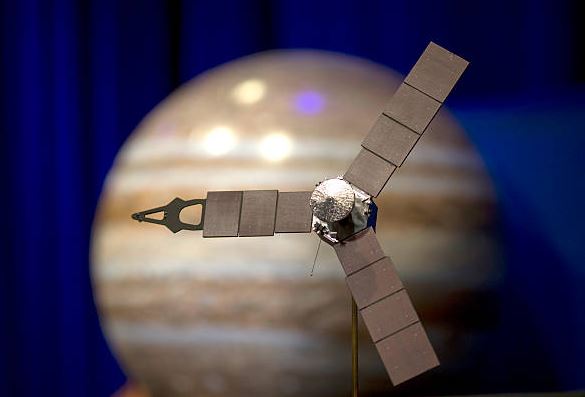NASA Mission Reveals Stunning Details of Eruptions on Solar System’s Volcanic Epicenter
NASA’s Juno spacecraft has provided a breathtaking glimpse into the volcanic activity on Jupiter’s third largest moon, Io, with new high-resolution images showcasing the moon’s rugged surface.
These remarkable images were captured during a recent close flyby of Io by the Juno spacecraft, marking the closest approach to this volcanic world in over two decades.
Juno’s Close Encounter with Io
The flyby, conducted last week, allowed Juno to obtain unprecedented detail of Io’s surface features.
Juno had previously ventured close to Io on December 30, 2023, coming within approximately 1,500 kilometers (930 miles) of the moon’s surface.
However, the latest passby focused on Io’s southern hemisphere, a departure from Juno’s prior flybys over the moon’s northern regions.
NASA’s Juno mission shared insights into the latest encounter, stating, “The JunoCam instrument aboard our Juno Mission acquired six images of Jupiter’s moon Io during its close encounter today. This black-and-white view was taken at an altitude of about 1,500 miles.”
The newly obtained images offer striking details of Io’s volcanic landscape, including twin active plumes that may indicate either two vents from a single massive volcano or two volcanoes in close proximity.
Additionally, lava lakes with apparent islands were observed, providing valuable insights into Io’s dynamic surface processes.
Scott Bolton, Juno’s principal investigator, highlighted the significance of these observations, stating, “By combining data from this flyby with our previous observations, the Juno science team is studying how Io’s volcanoes vary.”
Io’s intense volcanic activity is attributed to the gravitational forces exerted by Jupiter and its other moons, Europa, Ganymede, and Callisto. These tidal forces cause significant tidal heating within Io, resulting in extreme surface changes, including the rise and fall of terrain by as much as 100 meters (330 feet).
NASA’s Juno Mission Reveals Insights Into Io’s Volcanic Landscape

The distinct orange and yellow hues of Io’s surface are a result of constant emissions of sulfur and other compounds from its volcanoes. Despite being similar in size to Earth’s Moon, Io experiences constant transformations due to ongoing eruptions.
Astronomers aim to deepen their understanding of Io’s volcanic dynamics by analyzing the newly acquired images, with hopes of uncovering clues about the moon’s internal structure and volcanic behavior.
“We are looking for how often they erupt, how bright and hot they are, how the shape of the lava flow changes, and how Io’s activity is connected to the flow of charged particles in Jupiter’s magnetosphere,” added Dr. Bolton.
As scientists continue to unravel the mysteries of Io, these unprecedented images offer a glimpse into the dynamic and volatile nature of Jupiter’s captivating moon.

